Curiosity Drill Site Reveals That Under Its Red Surface, Mars Is Grey-blue

Curiosity drill site reveals that under its red surface, Mars is grey-blue
via reddit
More Posts from Xyhor-astronomy and Others
Take in the Surreal Beauty of Jupiter in These Incredible New Images NASA released the raw data earlier this week, allowing the public to process the beautiful images
If we ever want a long-distance relationship with aliens, they have to be able to find us.

Image of Titan taken by the Cassini spacecraft
NASA/JPL-Caltech/SSI/Kevin M. Gill
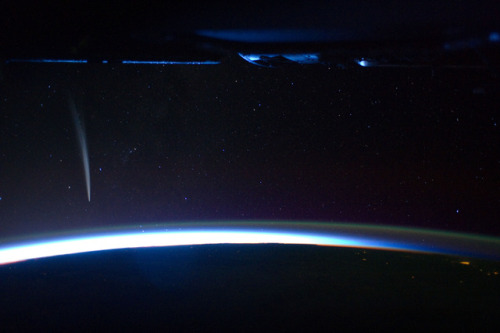
Comet Lovejoy is visible near Earth’s horizon in this nighttime image photographed by NASA astronaut Dan Burbank, Expedition 30 commander, onboard the International Space Station on Dec. 21, 2011.
Image credit: NASA
Flying Monsters of Scorpius | Yuriy Toropin
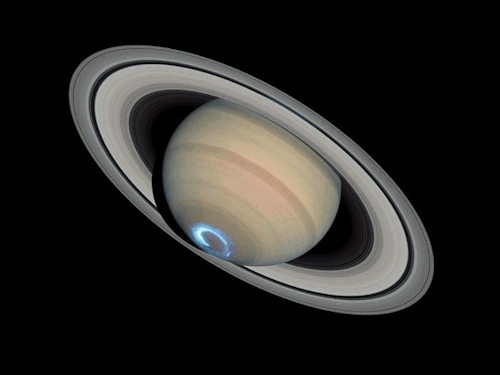
Sequence of images of auroras seen at the south pole of Saturn. Images combine visible and ultraviolet light.
Credit: NASA, ESA, J. Clarke (Boston University, USA), and Z. Levay (STScI)

Composed of gas and dust, the pictured pillar resides in a tempestuous stellar nursery called the Carina Nebula, located 7500 light-years away in the southern constellation of Carina.
Credit: NASA, ESA and the Hubble SM4 ERO Team
Solar System: 10 Things to Know This Week
Need some space?
Here are 10 perspective-building images for your computer desktop and mobile device wallpaper.
These are all real images, sent very recently by our planetary missions throughout the solar system.
1. Our Sun

Warm up with this view from our Solar Dynamics Observatory showing active regions on the Sun in October 2017. They were observed in a wavelength of extreme ultraviolet light that reveals plasma heated to over a million degrees.
Downloads Desktop: 1280 x 800 | 1600 x 1200 | 1920 x 1200 Mobile: 1440 x 2560 | 1080 x 1920 | 750 x 1334
2. Jupiter Up-Close

This series of enhanced-color images shows Jupiter up close and personal, as our Juno spacecraft performed its eighth flyby of the gas giant planet on Sept. 1, 2017.
Downloads Desktop: 1280 x 800 | 1600 x 1200 | 1920 x 1200 Mobile: 1440 x 2560 | 1080 x 1920 | 750 x 1334
3. Saturn’s and Its Rings

With this mosaic from Oct. 28, 2016, our Cassini spacecraft captured one of its last looks at Saturn and its main rings from a distance.
Downloads Desktop: 1280 x 800 | 1600 x 1200 | 1920 x 1200 Mobile: 1440 x 2560 | 1080 x 1920 | 750 x 1334
4. Gale Crater on Mars

This look from our Curiosity Mars rover includes several geological layers in Gale crater to be examined by the mission, as well as the higher reaches of Mount Sharp beyond. The redder rocks of the foreground are part of the Murray formation. Pale gray rocks in the middle distance of the right half of the image are in the Clay Unit. A band between those terrains is “Vera Rubin Ridge,” where the rover is working currently. The view combines six images taken with the rover’s Mast Camera (Mastcam) on Jan. 24, 2017.
Downloads Desktop: 1280 x 800 | 1600 x 1200 | 1920 x 1200 Mobile: 1440 x 2560 | 1080 x 1920 | 750 x 1334
5. Sliver of Saturn

Cassini peers toward a sliver of Saturn’s sunlit atmosphere while the icy rings stretch across the foreground as a dark band on March 31, 2017. This view looks toward the unilluminated side of the rings from about 7 degrees below the ring plane.
Downloads Desktop: 1280 x 800 | 1600 x 1200 | 1920 x 1200 Mobile: 1440 x 2560 | 1080 x 1920 | 750 x 1334
6. Dwarf Planet Ceres

This image of the limb of dwarf planet Ceres shows a section of the northern hemisphere, as seen by our Dawn mission. Prominently featured is Occator Crater, home of Ceres’ intriguing “bright spots.” The latest research suggests that the bright material in this crater is comprised of salts left behind after a briny liquid emerged from below.
Downloads Desktop: 1280 x 800 | 1600 x 1200 | 1920 x 1200 Mobile: 1440 x 2560 | 1080 x 1920 | 750 x 1334
7. Martian Crater

This image from our Mars Reconnaissance Orbiter (MRO) shows a crater in the region with the most impressive known gully activity in Mars’ northern hemisphere. Gullies are active in the winter due to carbon dioxide frost, but northern winters are shorter and warmer than southern winters, so there is less frost and less gully activity.
Downloads Desktop: 1280 x 800 | 1600 x 1200 | 1920 x 1200 Mobile: 1440 x 2560 | 1080 x 1920 | 750 x 1334
8. Dynamic Storm on Jupiter

A dynamic storm at the southern edge of Jupiter’s northern polar region dominates this Jovian cloudscape, courtesy of Juno. This storm is a long-lived anticyclonic oval named North North Temperate Little Red Spot 1. Citizen scientists Gerald Eichstädt and Seán Doran processed this image using data from the JunoCam imager.
Downloads Desktop: 1280 x 800 | 1600 x 1200 | 1920 x 1200 Mobile: 1440 x 2560 | 1080 x 1920 | 750 x 1334
9. Rings Beyond Saturn’s Sunlit Horizon

This false-color view from the Cassini spacecraft gazes toward the rings beyond Saturn’s sunlit horizon. Along the limb (the planet’s edge) at left can be seen a thin, detached haze.
Downloads Desktop: 1280 x 800 | 1600 x 1200 | 1920 x 1200 Mobile: 1440 x 2560 | 1080 x 1920 | 750 x 1334
10. Saturn’s Ocean-Bearing Moon Enceladus

Saturn’s active, ocean-bearing moon Enceladus sinks behind the giant planet in a farewell portrait from Cassini. This view of Enceladus was taken by NASA’s Cassini spacecraft on Sept. 13, 2017. It is among the last images Cassini sent back before its mission came to an end on Sept. 15, after nearly 20 years in space.
Downloads Desktop: 1280 x 800 | 1600 x 1200 | 1920 x 1200 Mobile: 1440 x 2560 | 1080 x 1920 | 750 x 1334
Applying Wallpaper: 1. Click on the screen resolution you would like to use. 2. Right-click on the image (control-click on a Mac) and select the option ‘Set the Background’ or 'Set as Wallpaper’ (or similar).
Places to look for more of our pictures include solarsystem.nasa.gov/galleries, images.nasa.gov and www.jpl.nasa.gov/spaceimages.
Make sure to follow us on Tumblr for your regular dose of space: http://nasa.tumblr.com
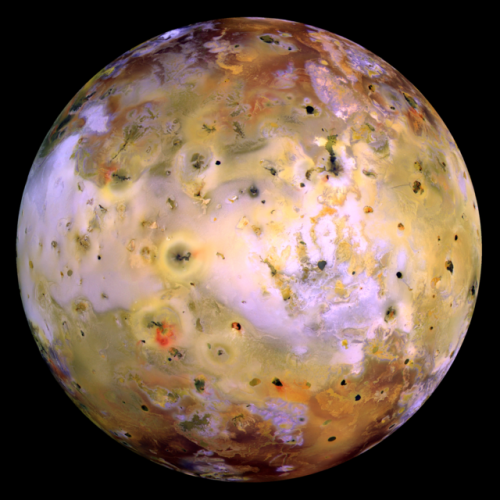
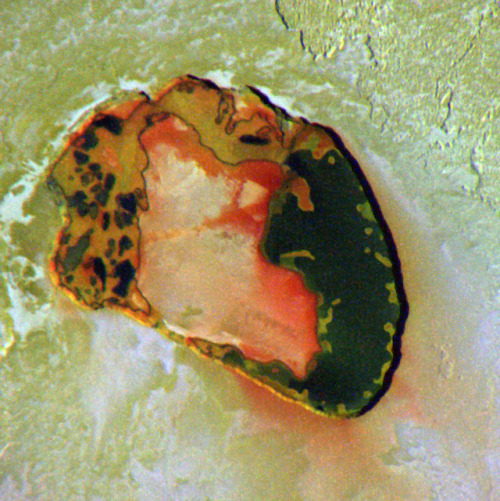
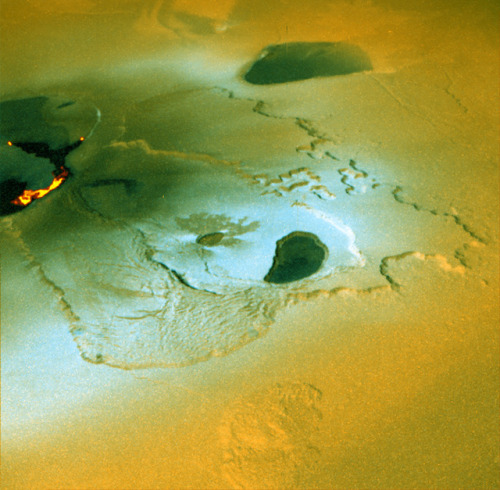
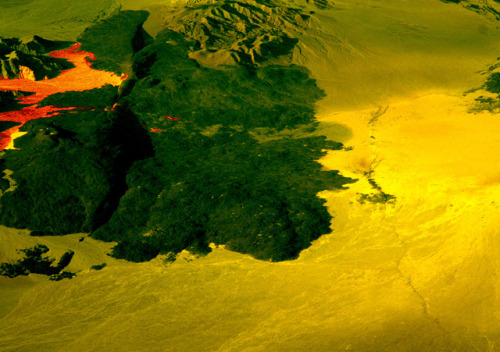
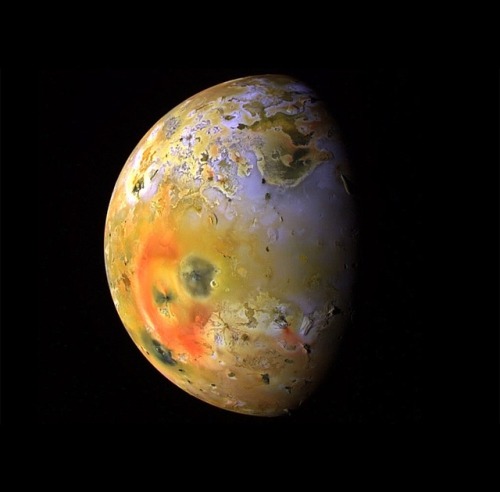
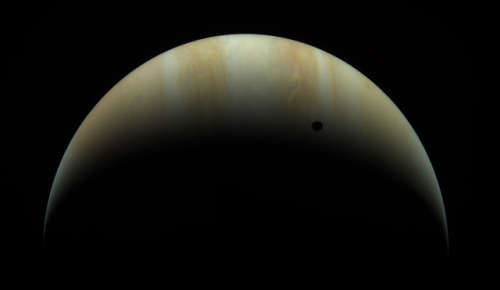
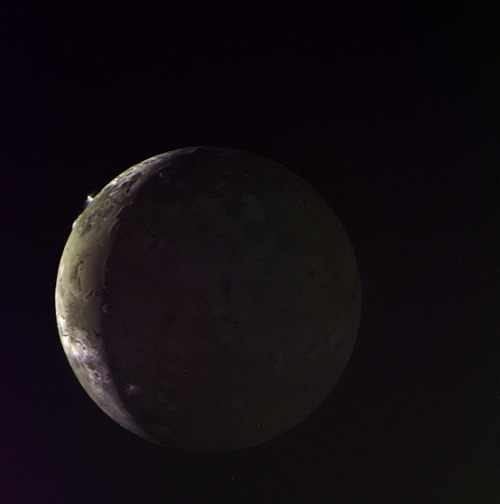
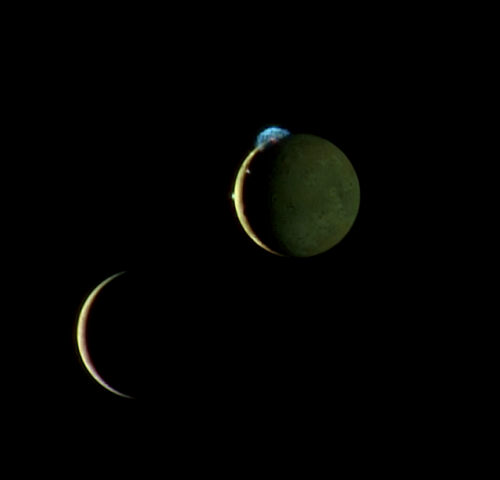
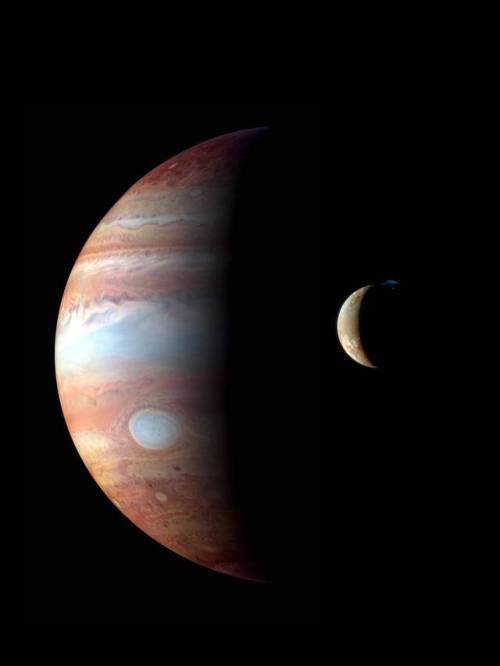
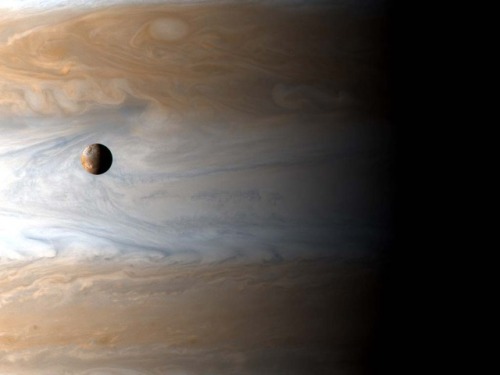
Io - The Volcanic Moon
Looking like a giant pizza covered with melted cheese and splotches of tomato and ripe olives, Io is the most volcanically active body in the solar system. Volcanic plumes rise 300 km (190 miles) above the surface, with material spewing out at nearly half the required escape velocity.
A bit larger than Earth’s Moon, Io is the third largest of Jupiter’s moons, and the fifth one in distance from the planet.
Although Io always points the same side toward Jupiter in its orbit around the giant planet, the large moons Europa and Ganymede perturb Io’s orbit into an irregularly elliptical one. Thus, in its widely varying distances from Jupiter, Io is subjected to tremendous tidal forces. These forces cause Io’s surface to bulge up and down (or in and out) by as much as 100 m (330 feet)! Compare these tides on Io’s solid surface to the tides on Earth’s oceans. On Earth, in the place where tides are highest, the difference between low and high tides is only 18 m (60 feet), and this is for water, not solid ground!
This tidal pumping generates a tremendous amount of heat within Io, keeping much of its subsurface crust in liquid form seeking any available escape route to the surface to relieve the pressure. Thus, the surface of Io is constantly renewing itself, filling in any impact craters with molten lava lakes and spreading smooth new floodplains of liquid rock. The composition of this material is not yet entirely clear, but theories suggest that it is largely molten sulfur and its compounds (which would account for the varigated coloring) or silicate rock (which would better account for the apparent temperatures, which may be too hot to be sulfur). Sulfur dioxide is the primary constituent of a thin atmosphere on Io. It has no water to speak of, unlike the other, colder Galilean moons. Data from the Galileo spacecraft indicates that an iron core may form Io’s center, thus giving Io its own magnetic field.
Io was discovered on 8 January 1610 by Galileo Galilei. The discovery, along with three other Jovian moons, was the first time a moon was discovered orbiting a planet other than Earth.

Eruption of the Tvashtar volcano on Jupiter’s moon Io, photographed by New Horizons.
Image credit: NASA/JPL/Galileo/New Horizons ( Stuart Rankin | Kevin Gill)
Source: NASA

Should there be a holiday called Astronomy Day?
Where lights are to be turned off for the entire night so everyone could see the stars?
-
 darkstarrydame liked this · 2 years ago
darkstarrydame liked this · 2 years ago -
 d-eadnam-e liked this · 6 years ago
d-eadnam-e liked this · 6 years ago -
 wakayume liked this · 6 years ago
wakayume liked this · 6 years ago -
 aninhaelric reblogged this · 6 years ago
aninhaelric reblogged this · 6 years ago -
 werevampiwolf liked this · 6 years ago
werevampiwolf liked this · 6 years ago -
 thefreshspeak liked this · 7 years ago
thefreshspeak liked this · 7 years ago -
 loony-paranoid-star liked this · 7 years ago
loony-paranoid-star liked this · 7 years ago -
 transitfieldbook-blog liked this · 7 years ago
transitfieldbook-blog liked this · 7 years ago -
 deadbreadstick liked this · 7 years ago
deadbreadstick liked this · 7 years ago -
 rockdownu liked this · 7 years ago
rockdownu liked this · 7 years ago -
 michllli-blog liked this · 7 years ago
michllli-blog liked this · 7 years ago -
 rabianqueen reblogged this · 7 years ago
rabianqueen reblogged this · 7 years ago -
 dustanclshadows reblogged this · 7 years ago
dustanclshadows reblogged this · 7 years ago -
 jahsarah reblogged this · 7 years ago
jahsarah reblogged this · 7 years ago -
 humongousfanhologram liked this · 7 years ago
humongousfanhologram liked this · 7 years ago -
 itsgeorgewales liked this · 7 years ago
itsgeorgewales liked this · 7 years ago -
 feisiron liked this · 7 years ago
feisiron liked this · 7 years ago -
 transarkadydzyubin reblogged this · 7 years ago
transarkadydzyubin reblogged this · 7 years ago -
 transarkadydzyubin liked this · 7 years ago
transarkadydzyubin liked this · 7 years ago -
 ubiquitousrandomness liked this · 7 years ago
ubiquitousrandomness liked this · 7 years ago -
 daydreamchico liked this · 7 years ago
daydreamchico liked this · 7 years ago -
 secretlyenchantinggalaxy liked this · 7 years ago
secretlyenchantinggalaxy liked this · 7 years ago -
 atomicpizzaandoneshots liked this · 7 years ago
atomicpizzaandoneshots liked this · 7 years ago -
 sudden-disclosure liked this · 7 years ago
sudden-disclosure liked this · 7 years ago -
 ritzyp-blog liked this · 7 years ago
ritzyp-blog liked this · 7 years ago -
 everydreamhome-aheartache reblogged this · 7 years ago
everydreamhome-aheartache reblogged this · 7 years ago -
 magentaluna liked this · 7 years ago
magentaluna liked this · 7 years ago -
 catsmammyhk-blog liked this · 7 years ago
catsmammyhk-blog liked this · 7 years ago -
 vaydan reblogged this · 7 years ago
vaydan reblogged this · 7 years ago -
 ten0fswords reblogged this · 7 years ago
ten0fswords reblogged this · 7 years ago -
 sixtyninemillion reblogged this · 7 years ago
sixtyninemillion reblogged this · 7 years ago -
 daveroo19 liked this · 7 years ago
daveroo19 liked this · 7 years ago -
 panzerneck liked this · 7 years ago
panzerneck liked this · 7 years ago -
 lutefisk-kingdom liked this · 7 years ago
lutefisk-kingdom liked this · 7 years ago -
 memyselfandsomeoneelse-blog1 reblogged this · 7 years ago
memyselfandsomeoneelse-blog1 reblogged this · 7 years ago -
 natalka01 reblogged this · 7 years ago
natalka01 reblogged this · 7 years ago -
 1n5an30uck reblogged this · 7 years ago
1n5an30uck reblogged this · 7 years ago -
 themadornithologist liked this · 7 years ago
themadornithologist liked this · 7 years ago -
 lordpudi liked this · 7 years ago
lordpudi liked this · 7 years ago -
 nothing2c liked this · 7 years ago
nothing2c liked this · 7 years ago
For more content, Click Here and experience this XYHor in its entirety!Space...the Final Frontier. Let's boldly go where few have gone before with XYHor: Space: Astronomy & Spacefaring: the collection of the latest finds and science behind exploring our solar system, how we'll get there and what we need to be prepared for!
128 posts